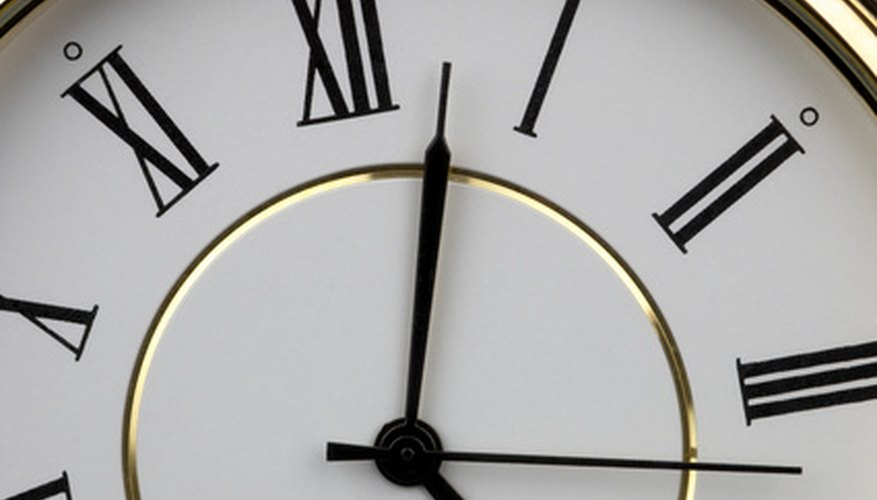Clock dials may become worn over time and, consequently, require restoration. Dials are located behind the minute and hour hands. They often have painted roman numerals and are usually created from painted metal or brass. The dials may fade or gather dirt from the backing. The metal backing constructed of white metal must be repaired so that the dials work accurately and efficiently. Painted clock dial restoration is a long process that yields beautiful results.
- Clock dials may become worn over time and, consequently, require restoration.
- The metal backing constructed of white metal must be repaired so that the dials work accurately and efficiently.
Pull at the small pin to remove the minute and second hands. Unscrew the dial from its case using a screwdriver. Set the screws, washer, pin and hands aside.
Test the dial's surface with water and a towel before cleaning. Remove dirt and residue from the dial with lukewarm water and a towel.
Create an accurate tracing of the dial that closely resembles its original form using a pencil and tracing paper as a guideline. Measure the diameter of the outer circle with a ruler and trace it onto the paper with a compass. Measure the inner circle and transcribe it onto the copy.
Draw a vertical line through the diameter on the paper to indicate the six and twelve o'clock positions. Draw two lines at right angles to the vertical lines to divide the dial into four quarters. Subdivide the quarters into three equal portions and draw the five minute graduations.
- Test the dial's surface with water and a towel before cleaning.
- Draw a vertical line through the diameter on the paper to indicate the six and twelve o'clock positions.
Draw the figures on the dial in pencil, using the tracing paper as your guideline. Create the outer circles on the dial with the compass and its divisions with the ruling pin. Draw thick, wedge-shaped quarter hour markings that radiate from the centre. Fill in the numerical figures with India-type ink. Fill in the middle space with white paint and a thin brush, if necessary. Set the dial aside to dry.
Remove the pencil markings with an eraser once the ink is dry. Screw the dial back into its base. Secure the hour and minute hands to the dial with the washer and pin.
- Draw the figures on the dial in pencil, using the tracing paper as your guideline.
- Remove the pencil markings with an eraser once the ink is dry.
TIP
At times, the dial is in such poor condition that it must be completely stripped with a professional pin-stripping tool. Consult a professional before proceeding.
